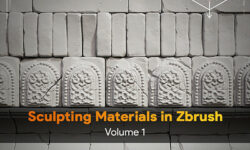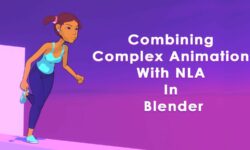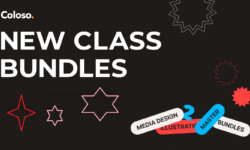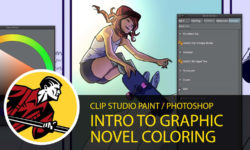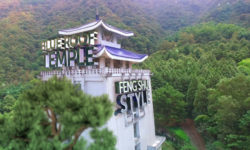Release date:2017, August 25
Duration:05 h 44 m
Author:Joel Bradley
Skill level:Beginner
Language:English
Exercise files:Yes
Substance Designer is a powerful, procedurally based tool for creating textures for 3D art and games. This training course provides a complete overview of Substance Designer, the 2017 version of the application. New texture artists can use this course to get a jumpstart in the field, while experienced artists will find plenty of advanced tips and tricks to take their skills to the next level.
Instructor Joel Bradley begins with an overview of a prebuilt substance graph, demonstrating the strengths and nondestructive workflow of Substance Designer, and walking through basics such as navigating the Substance Designer interface, adjusting important preferences, importing meshes and maps, and using the 2D, 3D, and Graph views. He then moves onto the large array of essential “atomic” nodes in Substance Designer, including the Blend, Curve, Slope Blur, Normal, Gradient, and Water Level nodes. These nodes comprise the heart of the Substance Designer workflow. Then learn how to create a custom panorama from scratch, and explore more advanced topics such as MDL materials, functions, and FX maps. Finally, Joel closes out the course by putting a substance to use. Learn about the advantages of using a published substance file (SBSAR) over hard-coded bitmaps for in-game materials, and see how to import a substance package into a game engine such as Unreal.
Topics include:
Choosing a graph template
Importing meshes and maps
Navigating the Explorer and Library
Working with the Graph view
Using 3D and 2D views
Using the atomic nodes
Creating and combining normals
Blending shapes together
Creating MDL materials
Building an FX map
Publishing a substance
Using a substance in a game engine like Unreal
Table of Contents
Introduction
Welcome 2m 47s
What you should know 1m 11s
Using the exercise files 1m 45s
1. 2017.1 to 2.1 Updates
Welcome 54s
Updated exercise files 4m 5s
Ul: Baker interface 3m 34s
Ul: Baker reset resource 2m 59s
2D View: Enable and disable tiling 2m 41s
Patterns: Arc Pavement 3m 48s
Patterns: Cube 3D 2m 39s
Patterns: Gradient Linear 3 2m 9s
Patterns: Shape Mapper 2 m 43s
Patterns: New Splatter Circular 4m 1s
Graph: Copy and paste to graphs 3m 46s
Patterns: Star 2m 13s
Patterns: Scratches generator 3m 51s
Adjustments: Histogram Select 2m 27s
Effects: Flood Fill 2m 19s
Effects: Flood Fill to Gradient 2m 19s
Effects: Flood Fill to Random Color 2m 24s
Tile Sampler: Multi-image input 2m 49s
2. Quick Start Substance Overview
Using shapes 5m 16s
Using custom inputs 5m 16s
Advantages of the multiswitch node 4m 54s
Transformation 2D nodes 3m 7s
Inner-panel masking 4m 48s
Creating edge detailing 4m 15s
Edge masking 2m 32s
Rivet generation 3m 28s
Normal map creation 3m 18s
Diffuse creation 3m 19s
Ambient occlusion 4m 18s
3. Substance Designer Setup
The Welcome dialogue 2 m 56s
Preferences and important setup 4m 53s
What is a Substance Package? 2m 1s
What is a substance graph? 2m 59s
Choosing the correct graph template 3m 47s
Setting our graph properties 3m 53s
Mesh setup prior to export 3m 59s
Importing meshes and maps into Designer 5m 6s
Baking out mesh specific maps 6m 2s
4. Ul and Tool Locations
Adjust the Ul layout 3m 23s
Menu items and options 3m 11s
The Explorer section 5m 42s
What is the Library? 3m 30s
The parameters section 3m 1s
5. Using Designers Graph View
Navigating and using the Graph view 2m 18s
Using the graphs quick access options 4m 10s
Setting up graph information feedback 4m 35s
Using the Graph View toolbars 3m 9s
Utilizing the preview size 3m 29s
6. 3D and 2D Views
Using the 3D View 3m 20s
Geometry and Materials menu 5m 14s
Lights and camera controls 5m 2s
Enviroment and scene settings 4m 2s
Display and render options 6m 44s
Navigating the 2D View 3m 8s 2D
View essential Controls 2m 42s
7. Using Atomic Nodes
Adding bitmap nodes 3m 53s
Discussing the power of the Blur node 5m 6s
Using blend nodes 4m 23s
Utilizing the Curve node 4m 29s
The Warp node 3m 22s
Adding detail with the Slope Blur node 3m 51s
Using shape nodes 5m 3s
Creating patterns with the Splatter node 4m 40s
Creating normals 3m 21s
Combining normals 3m 34s
Creating height maps 4m 22s
Creating color with the gradient nodes 5m 34s
Adding procedural dirt 6m
Using the text tool 4m 31s
Adding realism with the Water Level node 4m 49s
8. Creating Custom Environment Panoramas
Adding the panorama shape node 5m 20s
Blending shapes together 3m 17s
9. MDL Materials
What is MDL? 1m 28s
Creating the MDL graph 3m 19s
The basics of an MDL shader 4m 19s
Finalizing the Anisotropic BSDF 5m 13s
10. Functions and FX Maps
What are functions? 2m 25s
Adding the FX map 4m 41s
Building an FX map. part 1 6m 54s
Building an FX map. part 2 5m 52s
Finalizing the functions 2m 46s
11. Exporting and Using a Substance Package
Exposing substance parameters 6m 46s
Exporting bitmaps 3m 38s
Publishing a substance 3m 28s
Importing a substance into UE4 7m 36s
Adding finishing touches 4m 56s
Conclusion
Next steps 1m 19s
Watch online or Download for Free





 Channel
Channel